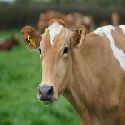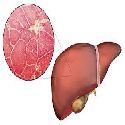 |
|
|
دکتر آرش امیدی، استاد گروه مدیریت بهداشت دام، دانشکده دامپزشکی دانشگاه شیراز
|


|
|
 |
Document Type : Review Articles
Author
Department of clinical sciences, Faculty of Veterinay Medicine, Ferdowsi University of Mashhad, Mashhad, Iran
Abstract
Our continually changing world has created new demands in society and has profoundly affected ecosystems, cultures, and professions. Ignoring the requirements and consequences of this ever-changing milieu could have devastating effects on all aspects of veterinary medicine. With the increasing global interconnections, several concepts have been created that should be addressed by the veterinary profession; otherwise, some instabilities will affect both the job and the society. In this article, these concepts will be critically analyzed and synthesized to portray an integrated perspective to address the necessities for the economic success of food animal practice, as well as describing the complicated role of veterinary medicine in the future. The first concept is the “evolving veterinary education”, introduced by OIE in 2009, to address the new requirements of competent veterinarians who are able to respond and adapt to modern trading and business requirements. The second concept is “One-Health”, which was introduced to address an integrated and all-inclusive perspective to health issues. All the specifications of this new concept are reflected in each letter of the word HEALTH (Humans, Ecosystems, Animals, Living Together, Harmoniously). The third concept is related to the “virtual water” theory, the total water consumed in the process of every activity, namely, the water footprint. It has been estimated that about 1000 and 15,500 liters of water are consumed in the process of production of a liter of milk and a kilogram of meat, respectively. Finally, the carbon footprint concept has been introduced to measure the total greenhouse gases emissions that enter into the atmosphere as carbon dioxide equivalent through individuals, events, organizations, services, places, products, and industries. The veterinary profession has a critical role and responsibility in the integration of the four abovementioned concepts
|
|
موضوع :
مباحث آموزشی -
مقالات کوتاه آموزشی
تعداد بازدید :
3955
بار
ارسال شده
در يكشنبه 4 مهر 1400 - 04:09 |

|
|
|
|
| |
|
|
 |
The effects of post-partum drops in body condition on indices of energy metabolism in mid-lactation Holstein cows
|
Article 3, Volume 20, Issue 3 - Serial Number 68, Summer 2019, Page 180-185  PDF (350 K) PDF (350 K) |
|
Document Type: Full paper (Original article) |
|
DOI: 10.22099/IJVR.2019.5348 |
|
Authors |
A. Omidi   1; M. Mohebbi-Fani1; S. Nazifi2; A. Mirzaei2; M. Seirafinia3 1; M. Mohebbi-Fani1; S. Nazifi2; A. Mirzaei2; M. Seirafinia3 |
|
1Department of Animal Health Management, School of Veterinary Medicine, Shiraz University, Shiraz, Iran |
|
2Department of Clinical Sciences, School of Veterinary Medicine, Shiraz University, Shiraz, Iran |
|
3Ph.D. Student in Feed Hygiene, Department of Animal Health Management, School of Veterinary Medicine, Shiraz University, Shiraz, Iran |
|
Abstract |
|
Background: Evaluation of energy metabolism indices in mid-lactation Holstein cows is critical to monitor health status. Aims: The objective of this study was to assess the effects of low (≤0.75) vs. high (>0.75) drops in body condition score (BCS) until day 60 post-partum on energy metabolism indices during mid-lactation in Holstein cows. Methods: Twenty-eight Holstein cows were included in the study from the day of calving to day 120 of lactation. Whole blood samples were taken on 60, 90, and 120 days in milk (DIM). Serum was analyzed for insulin, glucose, non-esterified fatty acids (NEFA) and beta-hydroxybutyrate (BHB) levels. Results: In cows with low BCS drop (LoD group), insulin did not change significantly through days 60 to 120 of lactation, but increased in high drop cows (HiD group) (P<0.001). Glucose concentrations decreased linearly in the LoD cows (P=0.039) and showed a quadratic increase in the HiD group on day 90 (P=0.028). Concentrations of non-esterified fatty acids showed both linear (P=0.04) and quadratic (P=0.002) changes in the HiD group. The HiD cows had significantly higher concentrations of insulin on day 120 (P=0.017) compared to the LoD group. Glucose concentration was lower (P<0.01) in HiD cows on 60 DIM. The concentration of non-esterified fatty acids was higher in HiD cows on day 90 (P<0.01). Surrogate indices of insulin resistance (calculated based on the concentrations of the measured metabolites) were different between the groups on day 90, indicating decreased insulin sensitivity in the HiD cows. Conclusion: Greater depletion of body reserves during early lactation may result in some inconsistencies in energy metabolism during mid-lactation periods. Controlling BCS loss during early lactation may help alleviate such alterations possibly through modifying insulin sensitivity of the tissues. |
|
Keywords |
|
BCS; Energy metabolism indices; Holstein cows; Insulin sensitivity; Lactation |
|
|
موضوع :
مباحث پژوهشی -
تعداد بازدید :
5903
بار
ارسال شده
در دوشنبه 1 مهر 1398 - 12:41 |

|
|
|
|
| |
|
|
 |
در فصل دهم از کتاب تازه منتشر شده طب رفتاری اسب به دو مقاله ما ارجاع داده شده است. فصل دهم کتاب به همراه اطلاعات آن در ادامه مطلب قابل دریافت است.
http://www.arashomidi.com/pic/1562799150_.pdf
http://www.arashomidi.com/pic/1562818556_.pdf
Omidi A, Vakili S, Nazifi S, Parker MO. Acute-phase proteins, oxidative stress, and antioxidant
defense in crib-biting horses. J Vet Behav 2017;20:31–6.
Omidi A, Jafari R, Nazifi S, Parker MO. Potential roles of selenium and zinc in the pathophysiology
of crib-biting behavior in horses. J Vet Behav 2018;23:10–4.
|
|
موضوع :
مباحث آموزشی -
کتابهای مفید آموزشی
تعداد بازدید :
6485
بار
ارسال شده
در چهارشنبه 19 تير 1398 - 09:17 |

|
|
|
|
| |
|
|
 |
Article 2, Volume 20, Issue 2, Spring 2019, Page 89-95  PDF (221 K) PDF (221 K) |
|
Document Type: Full paper (Original article) |
|
DOI: 10.22099/IJVR.2019.5256 |
|
Authors |
M. Mohebbi-Fani1; A. Omidi   1; A. Mirzaei2; S. Nazifi2; E. Pourtajabadi3; M. Badkoobeh3 1; A. Mirzaei2; S. Nazifi2; E. Pourtajabadi3; M. Badkoobeh3 |
|
1Department of Animal Health Management, School of Veterinary Medicine, Shiraz University, Shiraz, Iran |
|
2Department of Clinical Sciences, School of Veterinary Medicine, Shiraz University, Shiraz, Iran |
|
3Graduated from School of Veterinary Medicine, Shiraz University, Shiraz, Iran |
|
Abstract |
|
Background: The sub-clinical carry-over effects of post-partum (PP) conditions and the problems independent of parturition may affect the cows’ performance during the breeding period. Aims: It was hypothesized that some mid-lactation cows may have compromised liver functions and calculating liver activity index (LAI; -1.5 to +1.5) may be helpful in detecting such conditions. Methods: Plasma lipid and protein profiles, retinol and ceruloplasmin were measured in 37 Holstein cows on days 60, 90, and 120 PP. Liver activity index was calculated using the measures of cholesterol, albumin and retinol. The results were interpreted using some health and performance indices. Results: The mean LAI was 0.00 ± 0.61. Sixteen cows (45.7%) were LAI‾ and 19 cows (54.3%) were LAI+. In LAI+ cows the concentrations of cholesterol and albumin were unchanged, but in LAI‾ cows both of them increased through the study (P<0.05). Greater concentrations of low density lipoproteins (LDL) (P<0.01) and lower concentrations of γ- and total globulins (P<0.05; day 60) were detected in LAI+ cows. Ceruloplasmin was not different between the LAI groups with the highest level on day 90. Cholesterol had the strongest and the most repeated correlations with LAI during the study. The correlation of albumin with LAI faded on day 120 and vitamin A had a relationship only on day 60 PP. Triglycerides (TGs), very low density lipoproteins (VLDL) (day 60) and LDL (days 60 and 90) had positive correlations with LAI. All globulin fractions showed negative correlations with LAI on day 60. Seventy percent of the cows without endometritis (day 30 PP) and 33% of the infected cows were LAI+ during the breeding period. About 79% of the cows with body condition score (BCS) loss ≤0.75 (day 60) and 38% of the cows with BCS loss >0.75 were LAI+ during the breeding period. Conclusion: Compromised liver functions may exist in dairy cows during the breeding period and may be detected by calculating LAI. The relationship of LAI during the progressed lactation with herd’s performance needs to be investigated. |
|
|
موضوع :
مباحث پژوهشی -
مقالات پژوهشی
تعداد بازدید :
5070
بار
ارسال شده
در سه شنبه 4 تير 1398 - 08:27 |

|
|
|
|
| |
|
|
 |
كتاب Veterinary Medicine در ويرايش يازدهم خود كه اخيراً در سال 2017 ميلادي به چاپ رسيده، به 21 مقاله از اساتيد دانشكده ي دامپزشكي دانشگاه شيراز ارجاع داده است.
آقايان دكتر سعيد نظيفي (4 مقاله)؛ دكتر علي رضاخاني (3 مقاله)؛ دكتر آرش اميدي، دكتر علي اصغر چالمه، دكتر علي حاجي محمدي و دكتر احمد عريان (هر كدام 2 مقاله) و دكتر مهرداد پورجعفر، دكتر عليرضا رعايت جهرمي، دكتر شهرام شكرفروش، دكتر محسن قانع، دكتر خداداد مستغني و دكتر ناصر وصال (هر كدام 1 مقاله) از اساتيدي هستند كه به مقالات آن ها در اين كتاب ارجاع داده شده است.
كتاب Veterinary Medicine بيش از نيم قرن است كه در زمينه ي بيماري هاي داخلي دام هاي بزرگ در آمريكا منتشر و يكي از معتبرترين كتب مرجع دامپزشكي جهان مي باشد كه در تمام دانشكده هاي دامپزشكي دنيا تدريس مي شود.
اين كتاب به بررسي تفصيلي بيماري هاي مختلف در دام هاي بزرگ شامل بيماري هاي دستگاه هاي مختلف بدن؛ بيماري هاي متابوليك؛ مسموميت ها؛ كمبودها؛ بيماري هاي عفوني و انگلي؛ بيماري هاي نوزادان؛ بيماري هاي با منشاء ناشناخته و نوپديد و .... پرداخته و همواره راهگشاي مسائل علمي و باليني در حيطه هاي مرتبط با بيماري هاي داخلي دام هاي بزرگ بوده است.
كتاب Veterinary Medicine نخستين بار در سال 1960 ميلادي منتشر شد و پس از آن در سال هاي مختلف مورد بازنگري هاي متعدد قرار گرفت.
شايان ذكر است كه در ويرايش اخير اين كتاب به 6 مورد از مقالات منتشر شده در نشريه ي Iranian Journal of Veterinary Research كه در دانشكده ي دامپزشكي دانشگاه شيراز چاپ مي شود و از مجلات معتبر ISI در زمينه ي دامپزشكي مي باشد نيز ارجاع داده شده است.
|
|
موضوع :
مباحث آموزشی -
تعداد بازدید :
10296
بار
ارسال شده
در سه شنبه 12 بهمن 1395 - 02:08 |

|
|
|
|
| |
|
|
 |
My Biography
Dr. Arash Omidi is currently working as Vice President in Faculty of Agriculture, Birjand University, Iran. Dr. Arash Omidi received his DVM in Veterinary Medicine in 2002 at Ferdowsi University of Mashhad. Mashhad, Iran. Dr. Arash Omidi obtained DVSc from Shahid Chamran University, Iran in 2006 in Large Animal Internal Medicine. Dr. Arash Omidi’s current research interests are Veterinary Medicine, Gastroenterology, Large Animal Internal Medicine, Production Disease, and Toxicology |
|
موضوع :
سایر موارد -
تعداد بازدید :
9520
بار
ارسال شده
در سه شنبه 29 تير 1389 - 02:40 |

|
|
|
|
| |
|
|
|
|
|
افراد آنلاين : 3
امروز : 61
ديروز : 68
اين هفته : 527
اين ماه : 2778
امسال : 30747
کل بازديد : 267303
کل مطالب : 77
|
|
 |
|
 |